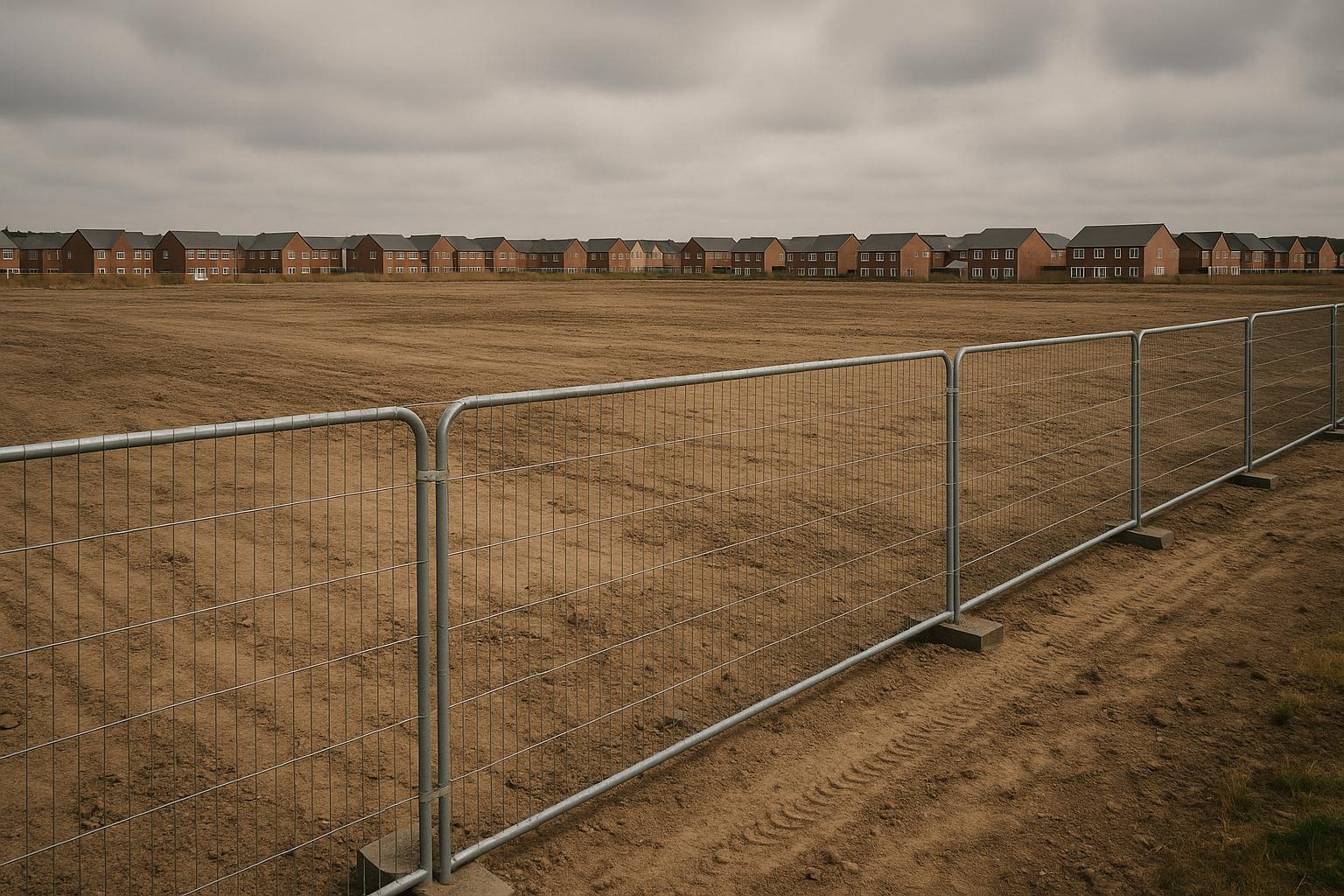Labour has pledged to commence building three new towns before the next general election, marking a significant step in its ambition to construct 1.5 million new homes by 2029. Housing Secretary Steve Reed is expected to announce details of the plans during his keynote speech at Labour’s party conference. A specialist taskforce has identified 12 potential sites across England, with Tempsford in Bedfordshire, Leeds South Bank, and Crews Hill in north London emerging as the most promising. Each new town is anticipated to provide at least 10,000 homes, collectively potentially delivering 300,000 homes over the coming decades.
The proposals range from creating entirely new standalone communities to extending existing towns and regenerating urban areas. Locations such as Cheshire, South Gloucestershire, East Devon, Plymouth, and Manchester are included in the recommendations. These developments will integrate essential infrastructure—including GP surgeries, schools, green spaces, libraries, and transport links—with the government intent on securing a substantial proportion of affordable housing, aiming for at least 40%. A newly established New Towns Unit is set to mobilise public and private funding and oversee delivery, with the town developments expected to be managed by development corporations endowed with special planning powers, reminiscent of the Stratford regeneration model post-2012 Olympics.
Labour’s commitment to a "new generation of new towns" builds on historical precedence from the post-World War Two era, when Clement Attlee’s government initiated similar projects to provide quality housing for those displaced by war damage. Steve Reed emphasised lessons from that period, expressing intent to "build cutting-edge communities" suited to modern families. Prime Minister Sir Keir Starmer framed the new towns as a solution to housing barriers that have made homeownership unattainable for many families, promising to tackle what he described as the nation’s most severe economic inheritance since the war.
Labour’s housing push comes amid a backdrop of challenges for the construction sector, including rising costs and taxes, alongside concerns about planning approvals which recently reached record lows under Labour’s current tenure. Despite these hurdles, the party aims to begin construction swiftly, with Deputy Leader Angela Rayner pledging that building on new towns will start "within months" of a Labour government taking office. She also reaffirmed the intent to establish an independent expert taskforce to finalise the most suitable development sites rapidly, to avoid long delays before actual construction begins.
The scope of the new towns initiative extends beyond the south-east, with reports indicating a focus on the Midlands and other regions like Nottingham, Stafford, and Northampton. Strategically located near major motorways, these areas are mostly under Labour local authority control, enhancing the practical prospects of delivery. Consideration is also reportedly being given to developments near the Thames Estuary, including potential expansions linked to new transport infrastructure such as a proposed road bridge between Essex and Kent.
Labour’s plans aim to tackle multiple housing-related issues concurrently. The party intends to enforce greater accountability on developers and ensure that housing developments include green spaces and vital community amenities, reflecting concerns raised by housing industry figures and urban planners. Sir Keir Starmer’s broader stance on housing underscores a willingness to overhaul the planning system to counter local opposition that often impedes development. Identifying as a 'yimby'—‘yes in my back yard’—he stresses the necessity of building homes to meet future demand and provide opportunities for young people to enter the housing market, an area where the UK has seen significant failures over the past decade.
However, the scale of Labour’s housing ambition raises important questions about land use and public acceptance. Urbanist David Rudlin has highlighted the enormous land demand implicit in the 1.5 million home target, projecting a need for greenfield sites equivalent to two Milton Keynes-sized areas within Labour’s first term. While he supports strategic local council planning initiatives to efficiently use land, he warns that overcoming 'nimby' resistance—a challenge that has historically defeated attempts to relax greenbelt protections—will require bold planning decisions. Labour’s new towns strategy will likely need to balance the urgency of housing supply with public concerns around development on previously undeveloped land.
This announcement arrives at a politically sensitive moment for Labour, with Sir Keir Starmer facing scrutiny over party leadership and competition from rival parties in polls. The conference provides an opportunity for Labour to articulate a vision of economic growth centred around large-scale housebuilding and community regeneration, contrasting with Conservative setbacks on housing promises and the rise of other parties with differing approaches.
In sum, Labour’s commitment to creating new towns before the next election reflects a significant attempt to address England’s chronic housing shortages through comprehensive planning and investment in infrastructure and affordable housing. While ambitious, the success of this initiative will depend on navigating complex economic, political, and social challenges, as well as delivering on promises to accelerate construction and engage communities constructively.
📌 Reference Map:
- Paragraph 1 – [1], [2], [5]
- Paragraph 2 – [1], [2], [5]
- Paragraph 3 – [1], [4], [7]
- Paragraph 4 – [1], [5], [4]
- Paragraph 5 – [1], [3], [6]
- Paragraph 6 – [1], [7], [6]
- Paragraph 7 – [1], [3], [4]
Source: Noah Wire Services
